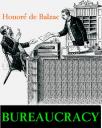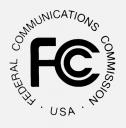
Did MiniMediaGuy put a false face on TechDirt’s pizza analogy?
(Editor’s note: The post below is from TechDirt founder Mike Masnick, writing to rebutt my critique of his essay on  copyright law. If you need more than Mike’s summary of the discussion to understand who-said-what, please read his original post and my retort. Let me note another comment briefly: Howard Owens told me Google News sells no ads around the content it scrapes, unlike Topix which is “trying to build (a) community around your content.” Hmnnn. Is Chris Tolles the evil-doer? Let me think about that. Meanwhile here is Mike Masnick, who wrote this as a comment to my posting. I will spotlight his thoughts here and now, and perhaps rely at a later date.)Â
Thanks for the detailed response, though, I am (of course) going to disagree. First off, the analogy may not be perfect, but no analogy is perfect. And I have trouble believing it’s half-baked when I’ve been studying and researching these topics, both academically and professionally for over a decade. It is true that in the course of a single blog post I may simplify things, I don’t think that makes the concept half-baked. I apologize if I was unclear in making my point, however.
You wrote:
“That’s not what the piracy and copyright debates are all about. Copyright holders object when a consumer downloads their stuff without paying, just like the pizza maker would call the cops if the kids came by after school and grabbed some slices off the counter without paying. â€
But, I’m afraid your analogy is a lot more half-baked in that case than mine. In that case, the pizza shop is MISSING its pizzas. That’s quite different — and that’s the important point we’re making. Copying content is no different than copying a recipe or copying ideas. It’s copying. It’s not theft, because nothing is missing.
And, before you claim that the money that could be made selling the content is missing, that’s a red herring. It’s money that the seller failed to capture, which is a marketing problem, not a legal one. What happens when someone copies something is that the seller was unable to create the right conditions for the economic transaction to happen — but nothing is *lost*.
You wrote:
“It would be a felony if the new pizza maker went over to the first shop and stole cheese to lower his or her unit costs so as to put out the $7 pie.â€
Again, that’s a case where a physical object is missing. Not so when content is copied.
You wrote:
“This would be analogous to using printed or multimedia material in a resale product without royalty or commission.â€
Nope. That’s different. Again, there’s a very important distinction between scarce goods and infinite goods. I recognize that it’s not necessarily easy to think in those terms, but the more you look at the differences between scarce goods and infinite goods, the clearer this becomes. Using content without a license is copying, it’s not theft. Nothing is missing.
That’s why I was actually quite careful with my pizza example. Nothing physical is stolen, but my opportunity to make money is, on the face of it, decreased. That’s the same thing that happened with the photograph or with any kind of content. It appears that your ability to make money has decreased, which leads to the upset reaction. But the reality is that if you adapt, adjust your business model and innovate, your ability to make money can increase… greatly.
You wrote:
“Let me use Mike’s pizza metaphor to explain. Web 2.0 media firms like Google are slaughtering old media firms like the one I work for (Hearst Corp.) in an entirely legal way.â€
This statement bothers me — though I understand the reasoning behind it. The problem, though, isn’t that Google is “slaughtering†Hearst. It’s that Hearst failed to adapt to the changing market. It’s not fair to blame Google for providing a product people want.
You wrote:
“These Web 2.0 guys are scraping all the pizzas in the world — or at least the headline and iconic representation of the pizza under the ‘fair use’ codicil of copyright law — and then selling advertisement around these fair use pages. That has turned out to be an enormously profitable and perfectly legal way to make a new information business because it accomplishes something that was never before possible in the world of pizza — the search engines, in particular, put all the pizzas in the world in one nice little row, so you can sniff ‘em, poke, em, filch a little cheese off the top or whatever, before you decide which one to read or view.â€
You left out one important point. They’re also putting that big row of pizzas in front of a MUCH bigger audience. That’s the key point that you seem to have skipped over in your analogy here. So, they’ve set up a situation where you can capture many more visitors (pizza eaters) and make money from them in more ways than before. For that you should be THANKING them. Yes, they are putting you up next to your competitors, but they’re introducing you to an audience who might never have found your otherwise. Your job, then, is to learn how to embrace that audience by innovating and doing things to make more of those people want to buy your pizza.
You wrote:
“What Mike did when he cooked up his pizza metaphor was to confuse several conundrums in the copyright debate:â€
I don’t see what I confused, after reading your post a few times… but let’s see… you wrote:
“what is a fair price for a digital copy of “Honky Tonk Women,†now that the Stones have fully amortized their upfront creative costsâ€
I don’t understand this statement. I don’t know what the concept of “fair price†means. There is no “fair price†there is simply the price that the market sets… and the economics on that are pretty clear. The marginal cost sets the price, as it does in all competitive environments. There’s no reason to worry about “fair†pricing when you let the market set the price. You wrote:
“should mashup folks be allowed to use video or audio in the making of new creative works that are derivative or include some ‘cheese’ made elsewhere and under what terms and conditions, because the system already knows how to let one artist re-perform another’s song and put it on an album, or remake a movie; but how do we extend those legal arrangements when thousands and ultimately millions of people wanna become part-time or full-time pizza makers;â€
Why do you need a legal arrangement for this? You are again falling back on the crutch of copyright, assuming that there needs to be a legal framework for this. If you get rid of copyright altogether, you’d be amazed at how quickly this would actually work itself out.
For a good example of how this works, look at the music industry in Jamaica. Musicians there create “riddims†that are then used by singers throughout the island to record their own songs on top of the riddims. By your thinking, those singers (and the producers who record those albums) should need to pay the riddim writers each time they use their riddims. But that’s not how it works. If a riddim is popular, that riddim writer is suddenly in demand for future writing and can make more money for the *next* riddim he writes, because singers will want to get their hands on it first. They’ll pay him for the next riddim… but then once it’s out, the riddim writer is better off having more and more people using that riddim publicly, because it builds up his own reputation for future deals.
In other words, no legal requirement is needed. What people recognize is all of your past work acts as a portfolio to get people to pay you more for your next work — and in that case you WANT people to create derivative works based on your work, because it only helps you out. It acts as free advertising for you… just as the Google Pizza Search Engine acts as free advertising for your Pizza shop.
You wrote:
“finally the issue closest to my heart, which is the failure of current copyright law, as foolish and extreme as it is in some regards, to protect at all the work of paid newsgatherersâ€
Well, there’s your problem. You’re thinking in terms of “protecting.†Protectionism hurts markets. It shrinks markets. There’s no getting around that… and you’re asking for protectionism for newsgatherers who, you wrote: “can spend weeks and months and millions putting together storiesâ€
Which is meaningless after the fact.. but useful for pricing the next assignment. Again, past works become advertising for future works. You do a great investigative piece, then it’s worth a lot more to send you to do another one, and more people will be interested in that new work as well.
You wrote:
“when then get legally scraped onto a website where attention, the most valuable good in a media-saturated world, is extracted by a search firm that paid nothing to acquire that information and, so far as I am aware, broke no law and followed fair use custom in the creation of this convenient new service called aggregation.â€
… again you leave out the most important point: “AND sends lots of folks who never would have seen that news in the first place TO YOUR SITE WHERE YOU CAN MAKE MONEY OFF OF THEM.â€
It’s hard for me to understand your complaint here. You have a company advertising for you, sending people who would never otherwise know about you to you… and you’re complaining that they’re not paying you. That baffles me, frankly.
– ends guest blog by Mike Masnick of TechDirt.




 Â
  Â
 